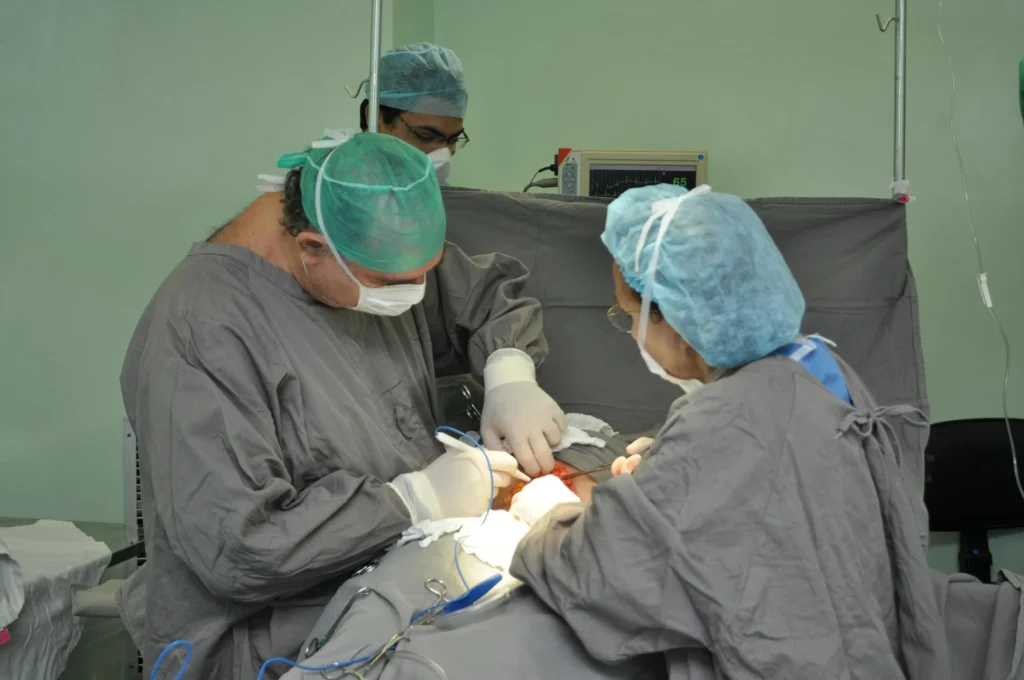Medical errors represent one of the leading causes of preventable harm in healthcare systems worldwide. Among these errors, misdiagnosis and delayed diagnosis stand out as particularly devastating issues that can fundamentally alter the course of a patient’s life. When healthcare providers fail to correctly identify or timely diagnose medical conditions, patients may face unnecessary suffering, worsened health outcomes, and significant financial burdens.
Understanding your legal rights and options when facing misdiagnosis or delayed diagnosis is essential for protecting yourself and your family. This comprehensive guide examines the legal landscape surrounding diagnostic errors and provides clarity on when and how you might pursue legal recourse.
Understanding Misdiagnosis and Delayed Diagnosis
What Constitutes Misdiagnosis?
Misdiagnosis occurs when a healthcare provider incorrectly identifies a patient’s medical condition or fails to diagnose a condition entirely. This can manifest in several ways: diagnosing a condition that the patient does not have, completely missing an existing condition, or diagnosing the wrong condition when symptoms point to a different illness.
The consequences of misdiagnosis can range from unnecessary treatments and procedures to allowing serious conditions to progress untreated. For instance, a patient experiencing chest pain might be told they have acid reflux when they are actually having a heart attack, leading to potentially life-threatening delays in appropriate treatment.
Defining Delayed Diagnosis
Delayed diagnosis refers to situations where a healthcare provider eventually reaches the correct diagnosis, but only after an unreasonable amount of time has passed. During this delay, the patient’s condition may worsen significantly, reducing treatment options and potentially leading to permanent complications or death.
Consider a scenario where cancer symptoms are initially dismissed as minor ailments, only to be properly diagnosed months later when the disease has advanced to a more serious stage. Such delays can dramatically impact survival rates and quality of life.
Common Causes and Contributing Factors
Several factors contribute to diagnostic errors in healthcare settings. Communication breakdowns between healthcare providers, inadequate patient history taking, and failure to order appropriate diagnostic tests represent frequent causes of misdiagnosis. Additionally, cognitive biases, such as anchoring on initial impressions or premature closure of the diagnostic process, can lead providers to overlook critical information.
System-related issues also play a significant role. Understaffing, time pressures, and inadequate access to medical records or test results can compromise diagnostic accuracy. Furthermore, some conditions present with atypical symptoms or mimic other diseases, making accurate diagnosis inherently challenging even under optimal circumstances.
Technology failures, such as misread imaging studies or laboratory errors, can also contribute to diagnostic mistakes. When multiple providers are involved in a patient’s care, coordination problems may result in important information being overlooked or misinterpreted.
The Legal Framework for Medical Malpractice
Establishing Medical Negligence
Not every diagnostic error constitutes medical malpractice. To pursue a successful legal claim, you must demonstrate that the healthcare provider’s actions fell below the accepted standard of care and that this deviation directly caused harm. The legal system recognizes that medicine involves inherent uncertainties and that even competent physicians can make honest mistakes.
Medical malpractice claims typically require proof of four essential elements: the existence of a doctor-patient relationship, breach of the standard of care, causation linking the breach to patient harm, and actual damages resulting from the negligence. Each element must be established through evidence and expert testimony.
The standard of care is determined by examining what a reasonably competent healthcare provider with similar training and experience would have done under comparable circumstances. This standard is not perfection but rather the level of care that meets professional expectations within the medical community.
Statute of Limitations Considerations
Legal action for misdiagnosis or delayed diagnosis must be initiated within specific time limits, known as statutes of limitations. These time periods vary by jurisdiction but typically range from one to three years from the date of discovery of the potential malpractice. Some states apply the statute from the date of the alleged negligent act, while others use the discovery rule, which begins the clock when the patient reasonably should have known about the potential malpractice.
Understanding these time limits is crucial because failing to file within the prescribed period generally bars any future legal action, regardless of the merits of the case. Certain circumstances, such as cases involving minors or instances of fraudulent concealment, may extend these deadlines.

When to Consider Legal Action
Evaluating the Strength of Your Case
Determining whether to pursue legal action requires careful evaluation of several factors. The severity of harm suffered, the clarity of the diagnostic error, and the availability of evidence all influence the viability of a potential claim. Cases involving clear-cut diagnostic failures that result in significant injury or death generally present stronger legal grounds than situations involving borderline judgment calls with minimal consequences.
Expert medical testimony plays a crucial role in malpractice cases. Medical experts must review the case and be willing to testify that the healthcare provider’s actions fell below the standard of care. Without credible expert support, even cases with apparent diagnostic errors may not succeed in court.
Financial considerations also matter. Medical malpractice litigation can be expensive and time-consuming, often requiring substantial upfront costs for expert witnesses, medical record reviews, and court proceedings. Many attorneys work on contingency fee arrangements, meaning they only collect fees if the case is successful, but this arrangement typically applies only to cases with strong merit and significant potential damages.
Types of Damages Available
Successful medical malpractice claims can result in various types of compensation. Economic damages cover quantifiable losses such as additional medical expenses, lost wages, and reduced earning capacity. These damages aim to restore the financial position the plaintiff would have occupied without the malpractice.
Non-economic damages address intangible harms like pain and suffering, emotional distress, and loss of enjoyment of life. Some jurisdictions place caps on non-economic damages in medical malpractice cases, limiting the amount that can be recovered for these types of harm.
In cases involving particularly egregious conduct, punitive damages may be available. These damages serve to punish the defendant and deter similar future conduct, though they are relatively rare in medical malpractice cases and subject to strict legal standards.
Steps to Take If You Suspect Misdiagnosis
Immediate Actions
If you suspect that you or a loved one has been the victim of misdiagnosis or delayed diagnosis, several immediate steps can help protect your interests. First, seek appropriate medical care to address your condition properly. Your health and safety must take priority over any legal considerations.
Obtain copies of all relevant medical records, including test results, imaging studies, physician notes, and correspondence between healthcare providers. These documents form the foundation of any potential legal action and can help establish the timeline and decision-making process that led to the diagnostic error.
Document your experience thoroughly, including dates of appointments, symptoms experienced, treatments received, and conversations with healthcare providers. This contemporaneous record can prove invaluable if legal action becomes necessary, as memories fade and details become less clear over time.
Consulting Legal and Medical Professionals
Consider consulting with both medical and legal professionals to evaluate your situation. An independent medical evaluation can help clarify whether a diagnostic error occurred and assess the impact on your health. This evaluation provides an objective assessment separate from the providers involved in the original care.
When selecting a medical malpractice attorney, look for someone with specific experience in diagnostic error cases. These cases often involve complex medical issues that require attorneys with deep understanding of diagnostic processes and medical standards. Many attorneys offer free initial consultations to evaluate potential cases.
The Legal Process and What to Expect
Pre-Litigation Procedures
Many jurisdictions require specific pre-litigation procedures before filing medical malpractice lawsuits. These may include mandatory mediation, expert witness certifications, or notice requirements to healthcare providers. Understanding these procedural requirements is essential for preserving your legal rights.
The investigation phase typically involves extensive medical record review, expert consultations, and research into the applicable standard of care. This process can take several months as attorneys and medical experts carefully analyze the circumstances surrounding the alleged malpractice.
Litigation Timeline and Challenges
Medical malpractice litigation is typically complex and time-consuming, often taking two to four years to reach resolution. The process involves multiple phases including discovery, depositions, expert witness preparation, and potentially trial proceedings.
Defense attorneys and insurance companies often vigorously contest malpractice claims, employing their own medical experts and challenging every aspect of the plaintiff’s case. This adversarial process can be emotionally challenging for patients and families still dealing with the consequences of the diagnostic error.
Settlement negotiations may occur at various points throughout the litigation process. Many cases resolve through settlement agreements that avoid the uncertainty and expense of trial while providing compensation for the plaintiff’s damages.

Conclusion
Misdiagnosis and delayed diagnosis represent serious threats to patient safety that can have profound consequences for individuals and families. While the legal system provides avenues for seeking compensation when healthcare providers fail to meet professional standards, pursuing legal action requires careful consideration of multiple factors including the strength of the case, available evidence, and potential outcomes.
Understanding your legal options empowers you to make informed decisions about whether to pursue legal recourse following a diagnostic error. However, legal action should be viewed as one component of a broader response that prioritizes your health and recovery while seeking accountability for substandard care.
If you believe you have been the victim of misdiagnosis or delayed diagnosis, consulting with experienced legal and medical professionals can help you understand your options and make decisions that best serve your interests. Remember that time limitations apply to medical malpractice claims, making prompt action essential for preserving your legal rights.



